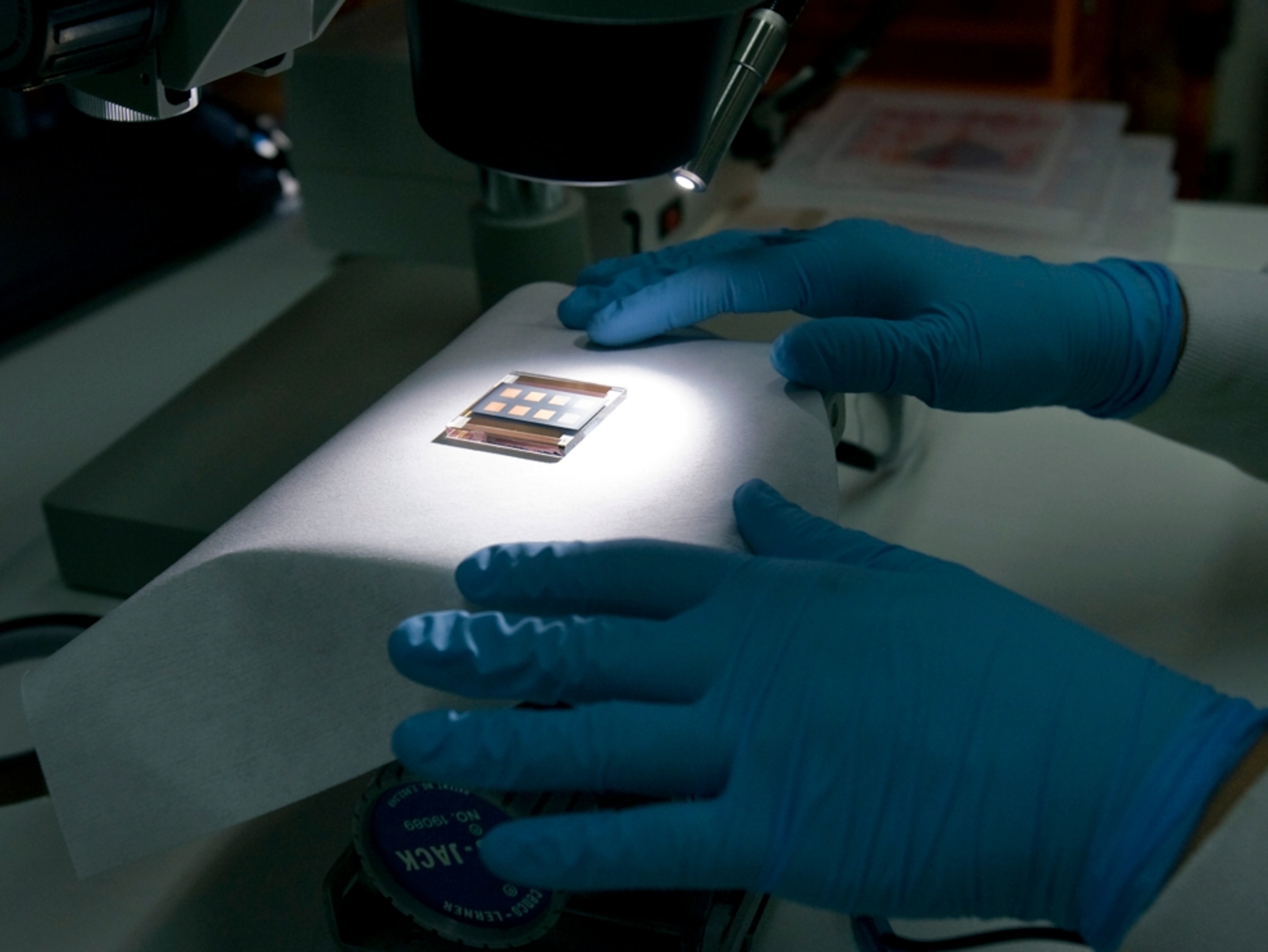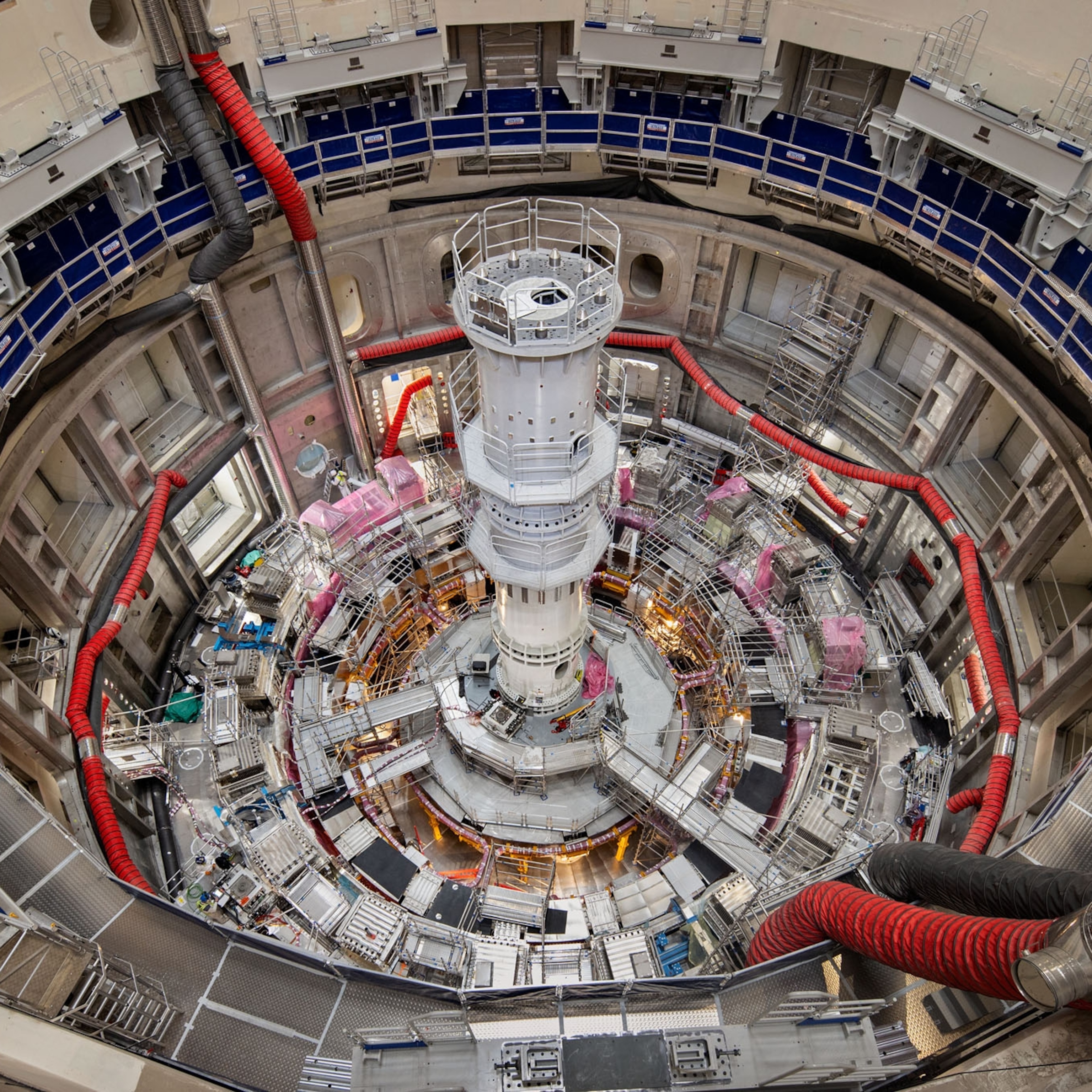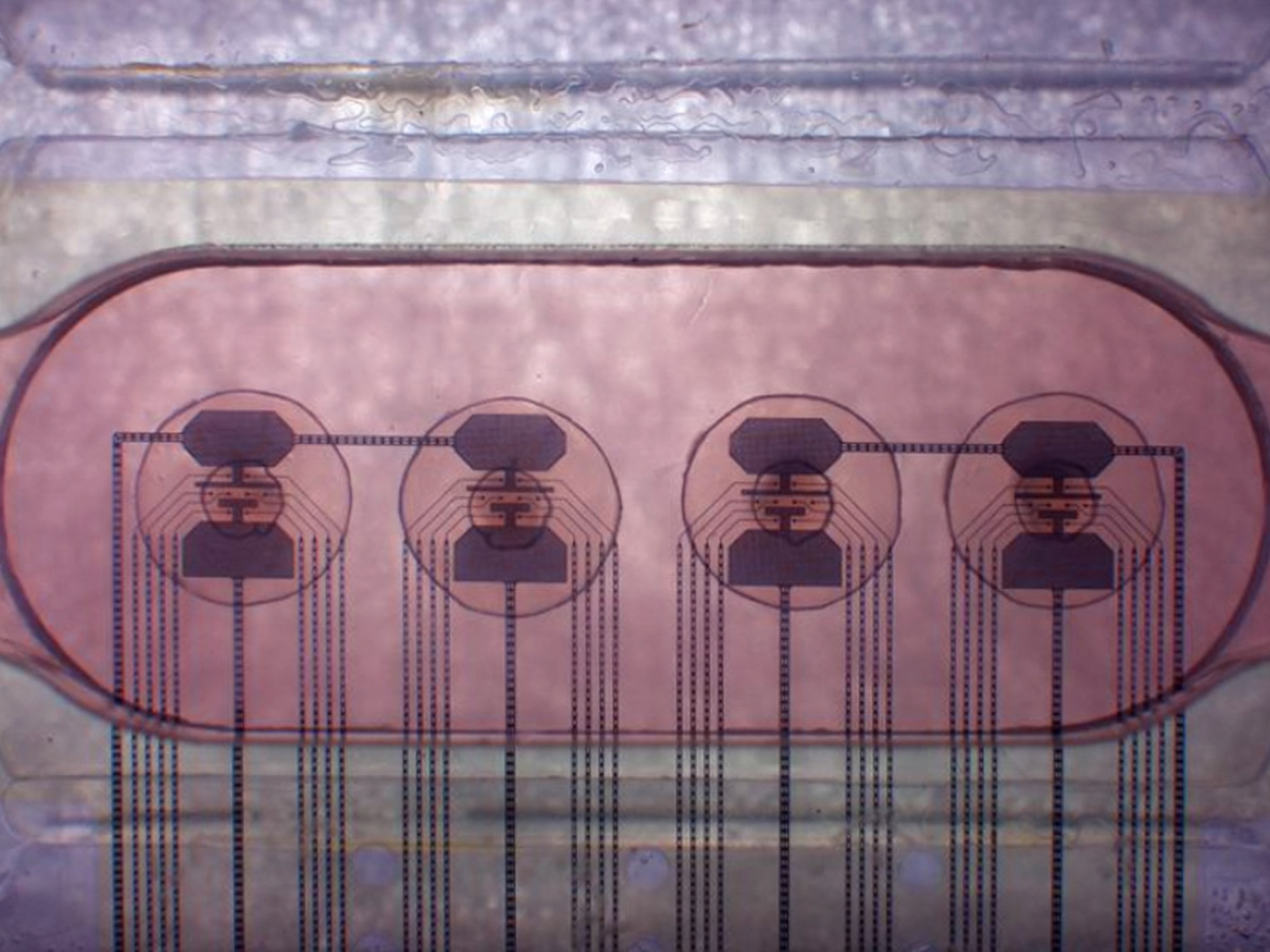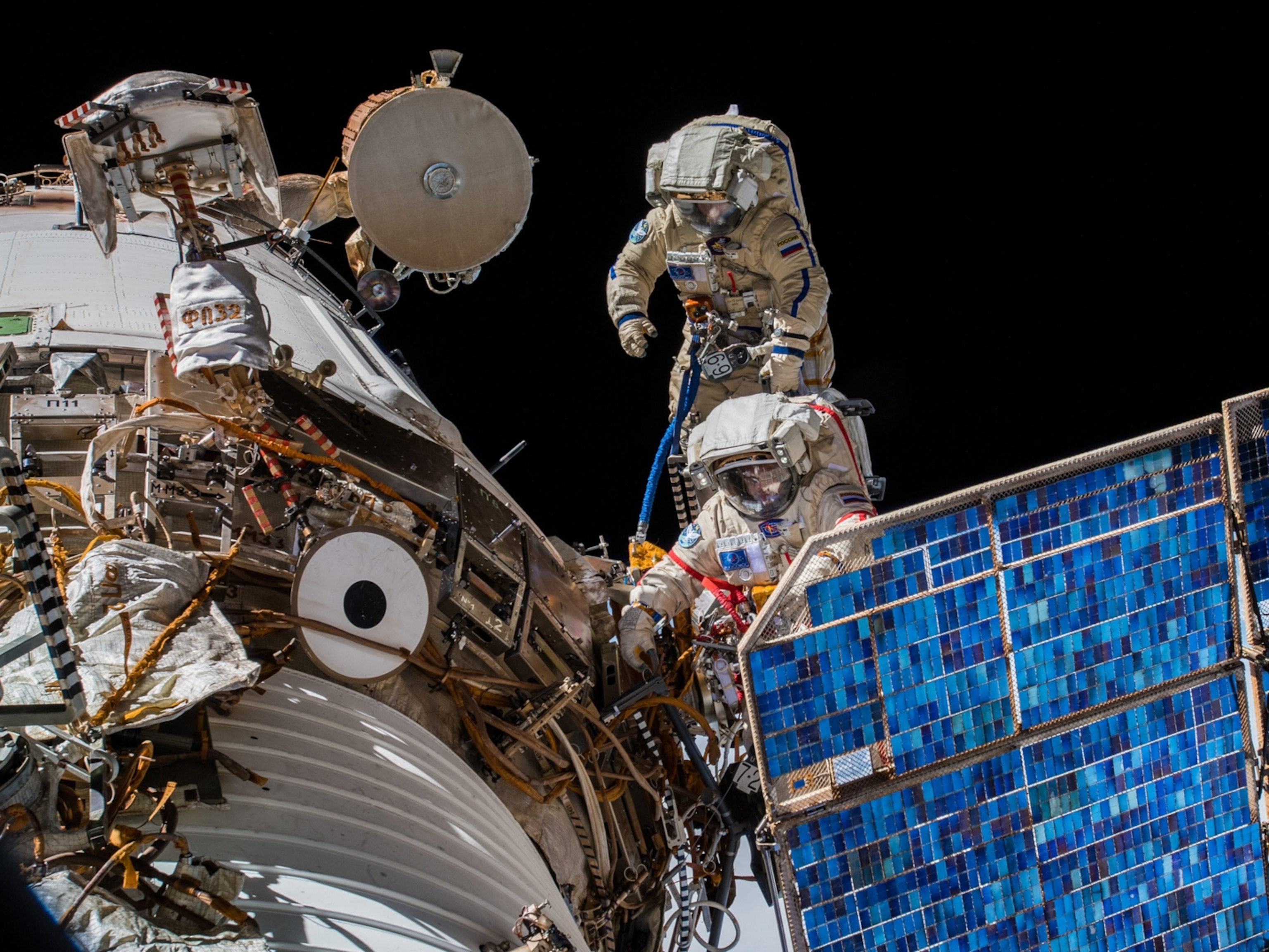
Shining Light on the Cost of Solar Energy
Technology, finance and savvy could make it cheaper to harness the sun’s rays
This story is part of a special series that explores energy issues. For more, visit The Great Energy Challenge.
The sun packs some serious power. Even taking into account the all the energy that’s lost in space, enough still reaches Earth in an hour to power the entire planet, theoretically, for a year.
So why doesn’t the world harness all this energy?
The truth: Capturing that power, and putting it to work in the form of electricity, is relatively expensive.
It’s true that the cost of solar electricity has declined over the past ten years. Along the way, the popularity of solar electricity has risen. A decade ago, fewer than 25,000 solar cells and modules were shipped in the United States every year. In 2008, that number had skyrocketed to more than 500,000. But that is still a drop in the bucket. Only about one-tenth of 1 percent of the energy consumed in the United States came from solar sources in 2008.
In Germany, a country with a much more robust government incentive program, solar’s share is much larger, but still only 1.1 percent of that nation’s electricity.
And, while most scientists agree solar power will be an important part of the future energy mix, there’s no clear consensus on when it will be able to compete on a large scale. In fact, the experts don’t even agree on how much solar electricity costs today.
Calculating the Sun’s Power
The problem: Solar electricity isn’t just one thing.
Think about any simple item, like a shirt. A shopper may know how much he or she paid for it, but that doesn’t mean the consumer knows how much a shirt, in general, costs. That number can vary quite a bit, depending on the type of shirt and where it is purchased.
Solar electricity is similar. The cost varies based on the technology being used, and on where it is being installed. The situation looks much different in Phoenix, Arizona, than it does in Albany, New York, and looks much different in Seville, Spain, than in Leipzig, Germany.
(Related: “For Hurricane Katrina Victims, A Solar Restart”)
The reasons for those differences are fairly easy to figure out, but sunlit geography is only the beginning, says Seth Darling, a scientist at the U.S. Department of Energy (DOE) Argonne National Laboratory in Illinois.
A standard way of thinking about the cost of electricity is “total system levelized cost”—basically, how much a power producer would have to charge for electricity to earn back the money spent building a new generating facility.
“But what’s surprising is that there’s no one accepted way to do a levelized cost calculation,” Darling said. “That’s the gorilla in the room and it’s a big reason there’s so much confusion about the cost” of solar photovoltaics (PV).
Figuring out the levelized cost requires a number of guesses: How well the solar energy system will perform, how long it will last, and even how much sunshine it will get over the next 30 years. It’s possible to make good guesses. But, right now, everybody makes different ones and it’s hard to say who’s right.
That said, there’s wide agreement that solar electricity is pricey. The U.S. DOE’s Energy Information Administration (EIA) estimates that it’s the most expensive form of electricity among current technologies for new electricity generation, about $396 per megawatthour for PV. That’s more than double EIA’s estimate of the total system levelized cost of wind, and almost four times the cost of conventional coal.
And that analysis looks at large-scale solar, the kind usually owned by utility companies. Small installations on home rooftops are even more expensive, because they don’t take advantage of buying—or installing—in bulk. To be fair, over 20 years, a homeowner will earn back between 76 percent and 109 percent of the system’s cost in the form of lower electricity bills, because the fuel that powers solar energy is free, according to a 2009 report on financing solar installations in the residential sector by the U.S. DOE National Renewable Energy Laboratory.
With such a broad range in the potential rate of return, it isn’t always easy to find a bank that will make that loan, says Ed Regan, assistant general manager of strategic planning at Gainesville Regional Utilities (GRU) in Gainesville, Florida. GRU helped Gainesville residents get around that problem by implementing a feed-in tariff, a system where a utility offers solar panel owners a 20-year contract to buy solar electricity, guaranteeing the owners will make a set profit on their decision to go solar. There are other alternative financing options—such as letting the utility or a third party buy and own the solar system, while the homeowner hosts it on the roof—but these options aren’t available everywhere.
(Related: “Beating the White House to the Solar Punch”)
(Related: “Renewable Energy: Ontario’s New Gold Rush”)
It’s All in the Material
So why is solar so expensive?
Converting light into electricity with no moving parts is a profoundly different enterprise than turning a turbine to make power—the technology that is at work in coal, natural gas, nuclear, hydropower plants and, most visibly to the public, at wind farms.
“Wind power is the same technology as it’s been for 1,000 years,” said Tom Meyer, a professor of chemistry at the University of North Carolina at Chapel Hill. “There’s nothing to invent. It just needs to be improved.” The makers of wind turbines have made huge cost reductions in recent decades with relatively small tweaks to an otherwise familiar system.
That’s not yet true for solar, experts say. Most solar cells are made from silicon—the same semiconductor material that is at the heart of computers. The cells are expensive to produce because it takes a great deal of energy to purify the silicon. And, while the computer industry has made enormous strides in making cheaper silicon devices, those advancements don’t translate to the solar industry.
“It’s kind of comparing apples and oranges,” says Hugh Hillhouse, a professor of chemical engineering at the University of Washington. “The semiconductor industry makes minutely patterned silicon. You’d have to look at it under an electron microscope to see the intricate structure. Their advancements have been about how to design and fabricate that intricate structure cheaply. And the solar cell: That’s completely not intricate. It’s simply a few layers of semiconductor. It changes the economics dramatically since the manufacturing cost is more closely tied to the cost of the material, not the patterning.”
What may really help to lower the cost of solar are new materials—especially semiconductors made from the compound cadmium telluride. It’s cheaper to make “thin-film solar cells” with cadmium telluride than with silicon.
But that still leaves what experts call “soft costs,” everything from permitting fees to the hardware that mounts solar panels onto a roof. Even though there’s disagreement over how much of the price of solar is tied up in these soft costs, they are clearly an important factor. In fact, Ryne Raffaelle, director of the National Center for Photovoltaics at the National Renewable Energy Laboratory, says the solar array itself accounts for only half the cost of a solar system today.
Innovations that could cut both hard and soft costs are being made all the time, but they don’t necessarily reach customers quickly. For one thing, not every great idea that works in a lab can be replicated on a mass production scale. And it can take a long time to iron out technological kinks on an apparatus that the manufacturer wants to be sure will last a long time.
“Different industries have different speeds from discovery to marketing. Consumer electronics is relatively quick. But it can be seven or eight years for the auto industry,” said Paul Friley, an energy economist at U.S. DOE’s Brookhaven National Laboratory in Upton, New York. “With solar, you have 20-year warrantees. You want it to work and be durable. And that means you have to spend a long time testing it.”
Seeking an Even Footing
Expensive as it is, solar electricity can already be competitive in a limited way.
In Hawaii and some parts of the Southwest, solar has already dipped below “grid parity.” Essentially, that means solar energy can be produced and sold for less than the average, going electric rate. That works because electricity is already expensive in those places, and because locations are ideal for producing solar electricity—lots of clear, sunny days.
(Related: “Solar Brings Light to Haiti”)
Friley offers another option. Even in places where the average cost of electricity is low, that cost varies with the seasons and the time of day. Peak load electricity—the power that consumers draw on in the middle of a hot summer afternoon, for instance—costs a lot more than a region’s average cost of electricity. Peak load times happen to coincide with the peak hours for sunshine. If the system were designed to encourage the use of solar to cover peak load, the cost savings would be substantial, he says.
It’s also important to point out why fossil fuel electricity is relatively cheap in the United States: The behind-the-scenes costs of burning fuel that produces carbon dioxide and noxious pollutants—health care costs, environmental cleanup, and the current and future expenses of adapting to a warmer world—are not included in the U.S. electric bill. Solar would naturally reach grid parity faster under policies that accounted for those costs by putting a tax or price on carbon.
How Long Must Consumers Wait?
But the question for most consumers is when it will make sense to put a solar panel on the roof.
Partly because of the issues in estimating levelized cost, there’s not a clear answer right now. In fact, the right answer could change over time. For instance, cadmium telluride thin film panels could help solar reach grid parity sooner than silicon panels could, but tellurium—a key ingredient—is fairly rare. If production of cadmium telluride solar panels increases substantially, it could trigger a scarcity of tellurium, raising the price for that type of panel. If the solar industry has become dependent on the short-term low-cost cadmium telluride option, long-term scarcity could end up moving solar electricity back out of grid parity for many people.
Thanks to the rising cost of coal and natural gas—as well as the short-term cost benefits of cadmium telluride, and falling costs of silicon and other solar options—the National Renewable Energy Laboratory estimates that solar energy could reach nationwide grid parity by 2017. That’s without any subsidies and with only small, incremental improvements on current technology.
But Seth Darling at Argonne says the United States won’t be likely to see hundreds of gigawatts of solar running at grid parity until 2025, at the earliest.
(Related from National Geographic Magazine: “Plug Into the Sun”)








